The first semi-final in the Taça da Liga was a mouth-watering clash between the top two sides in Liga NOS, Benfica and Porto. Porto, who have never won the competition before, were attempting to make only their third final. However, Benfica are the most decorated team in the competition having won the trophy seven times in its 11-year history.
Team news
Both managers named strong sides for this game with Iker Casillas the only notable absentee for Porto. In the other dugout Benfica boss Bruno Lage gave Mile Svilar, the youngest ever Champions League goalkeeper, his third start in the competition. He also gave a start to young starlet Joao Felix, who has been linked with moves to Liverpool and Manchester United this January.
First half
In the last five meetings between these two sides, there have been fewer than three goals in all of them. Judging from the first moments of the match, this was never going to be the case here. Porto started the game playing with a high press which caused organisational problems to Benfica.
In the 20th minute poor defensive communication allowed Porto to have two attackers in between the Benfica centre-backs. This allowed Héctor Herrera to split the defenders with a pass into the feet of André Pereira to create a one-on-one opportunity.
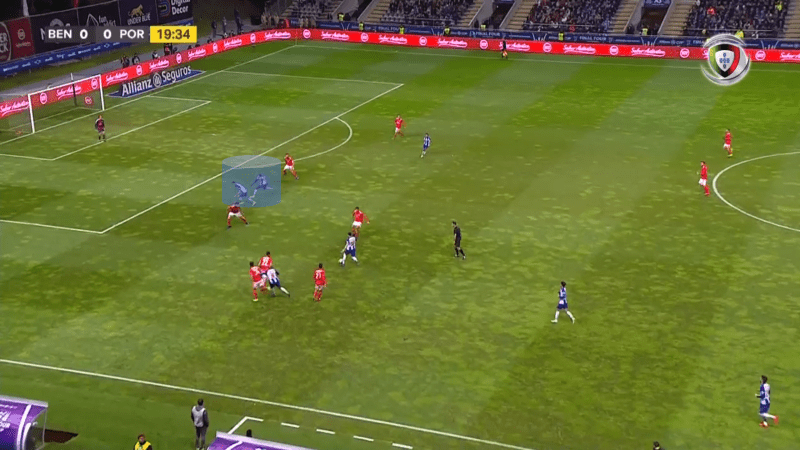
There were further problems for the Benfica defence as Jardel went to screen the run of Moussa Marega. However, as Jardel did not put pressure on the ball, Pereira was left with a one-on-one opportunity with Svilar. The Portuguese striker should have scored, but he fired his shot to the near post and it was saved by the young keeper.
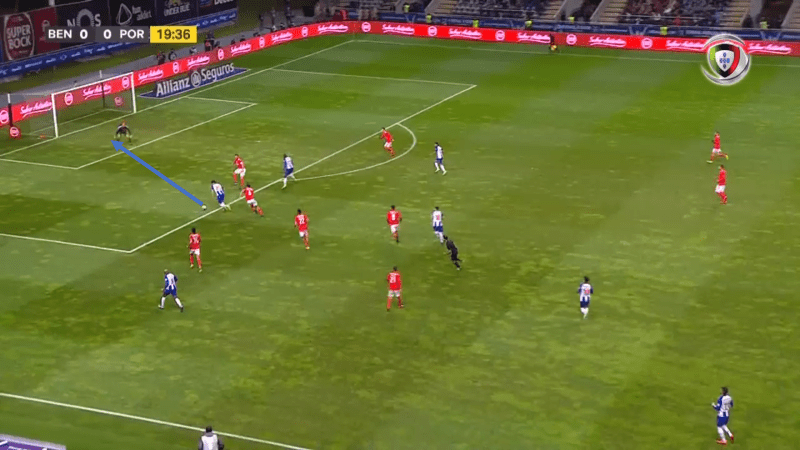
Benfica were also sloppy when trying to play out from the back, unaware of the space and the options. When Gabriel Pires receives the ball below, he should check his shoulder to see the space behind him or the option of Andreas Samaris to his left.
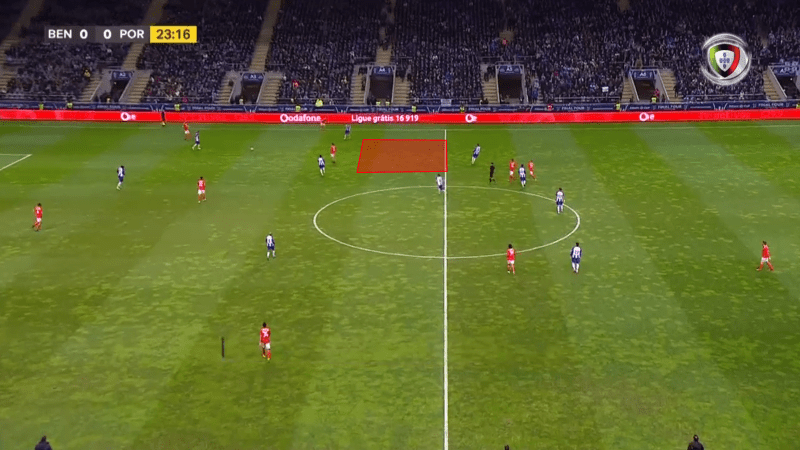
However, Pires’ first touch takes him inside. This is the trigger for Porto to begin the press, as Óliver Torres wins back possession for them. The key point about the Porto press is the positioning of Marega, who is in between centre-back and full-back.
As a result, when Torres wins possession, he can play the ball straight to Marega to take it through the gap in the Benfica defence and have a shot on goal. His effort is saved by Svilar, but Yacine Brahimi follows up the rebound to give Os Dragões a 1-0 lead.
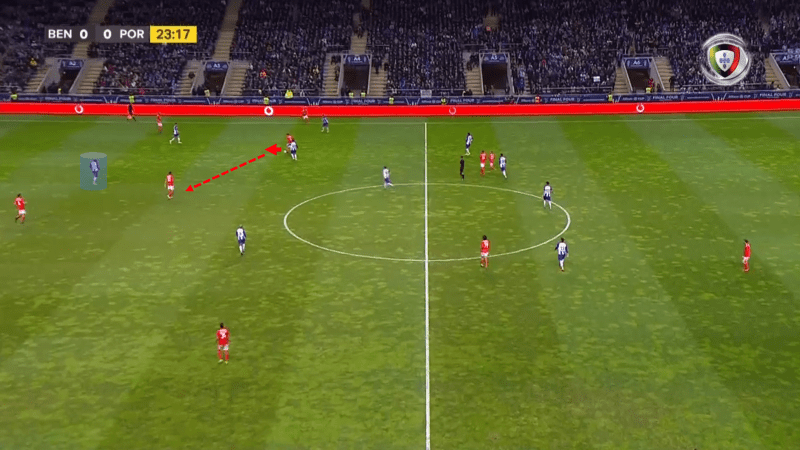
When Porto had possession in their own half Benfica had a good defensive shape. They screened off options in the middle which prevented Porto from building up possession. In the example below, Felipe tries to play in Pereira, but the pass is intercepted by Jardel who reads the game well with his defensive triangle.
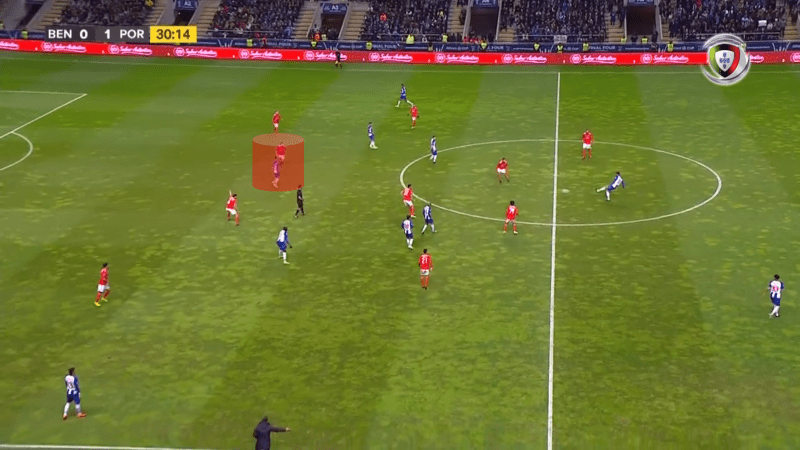
The key aspect of the shape that Benfica had was the ability to counter-attack and create an overload with the front three players. This was helped by the amount of Porto players in the Benfica half due to their high press.
When Jardel wins back possession he drives forward with the ball to initiate the counter-attack. Not only does this bring momentum to the transition, but it also brings a 4v2 overload.
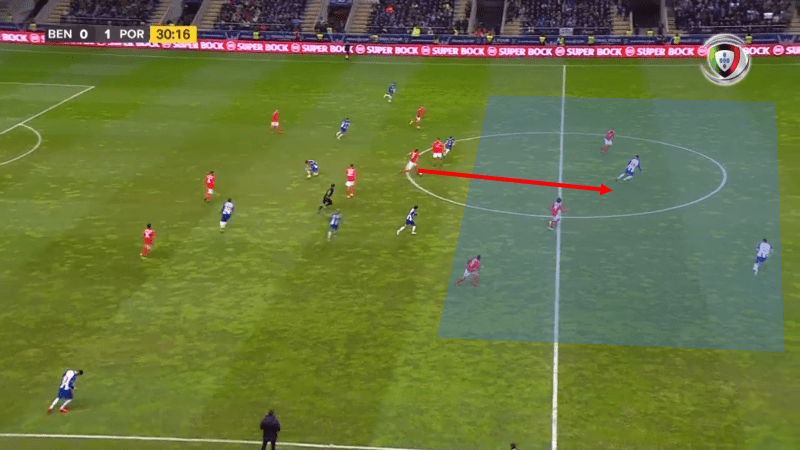
When in such an overload, Benfica do very well to maximise the space they have created. They do this by using width. In the example in which Benfica equalise, Pizzi and Harris Seferović take up wide positions with Felix taking up a central position.
This makes Felipe and Pepe get compact to stop the run of Felix. However, this keeps Seferović free on the left side to have a shot on goal. The shot is saved by Vaná but rebounded in by Rafa to make the score 1-1.
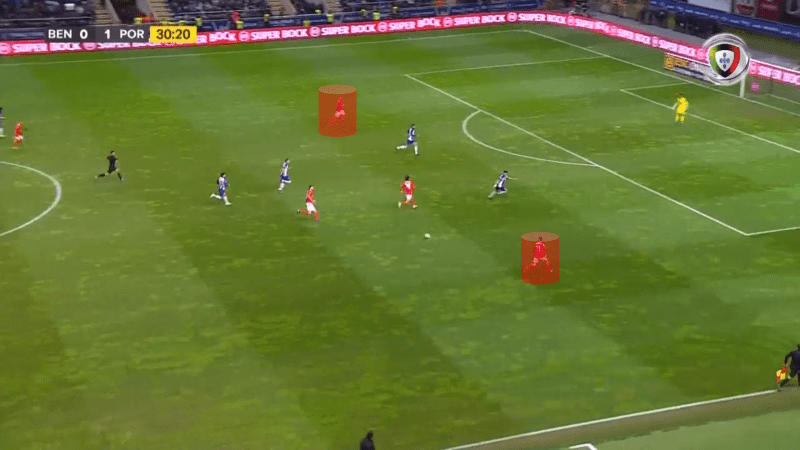
Benfica scored a disallowed goal using the same method just before half time, but it was narrowly offside after VAR chalked off the goal. However, at times in the game, there were holes in Benfica’s defensive shape which were capitalised on.
When playing a defensive shape all players must be aware of the runs around them. If an attacker makes an unfollowed run or there is a gap in the defensive shape, this can be exploited. In the lead up to Porto’s second goal, Rafa is not aware of the run made behind him by Jesus Corona.
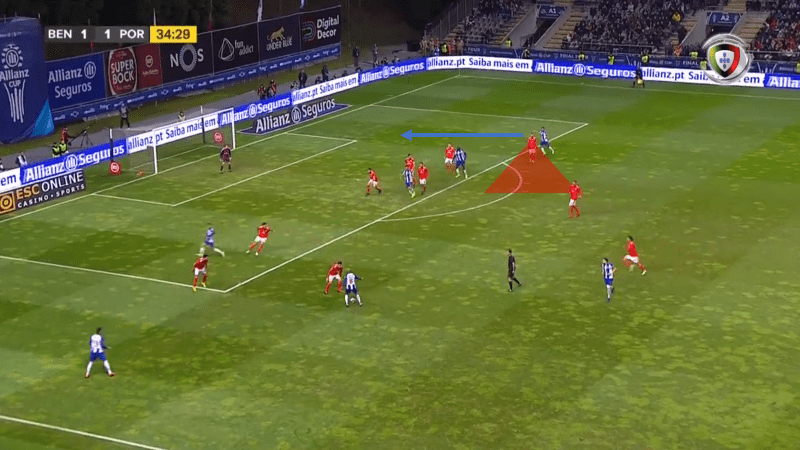
This allowed Brahimi to play a looping ball over the Benfica defence into the feet of Corona. When Corona receives the ball, he has a great opportunity to shoot, but he is very clever and cuts it back. Cutting the ball back from by the by-line to an attacker in the box is very effective and is commonly seen with Barcelona and their Messi-Alba combination. This is due to increasing the defender’s defensive triangle to over 180 degrees.
Therefore, the defender cannot adjust his body position to take the ball and the man out of the game. Consequently, he must go for the priority which is the ball and leave the man free. This will almost certainly leave the attacker with a tap-in. In this case Marega taps in to regain the lead for Porto.
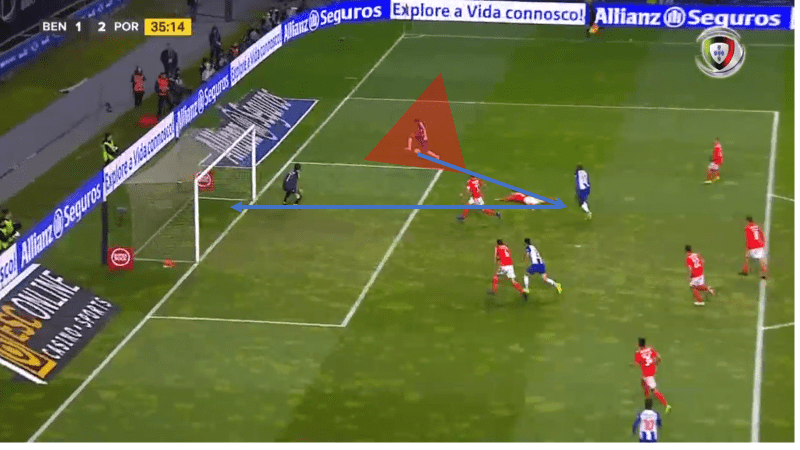
How did Porto see out the game?
Porto knew that they were vulnerable to the Benfica counter-attack when pressing high. So, for the last 15 minutes of the game, Porto decided to set up in a defensive shape of their own. Porto kept the middle of the pitch compact, with the two full-backs tucking in.
To create space on the pitch Benfica tried to create width by having two wide men, but they were marked out by Fernando and Marega. Porto’s first line of defence worked hard to screen the defenders to prevent any balls going into the Benfica attackers, which they achieved excellently. The Benfica midfield failed to play the ball into their attackers.
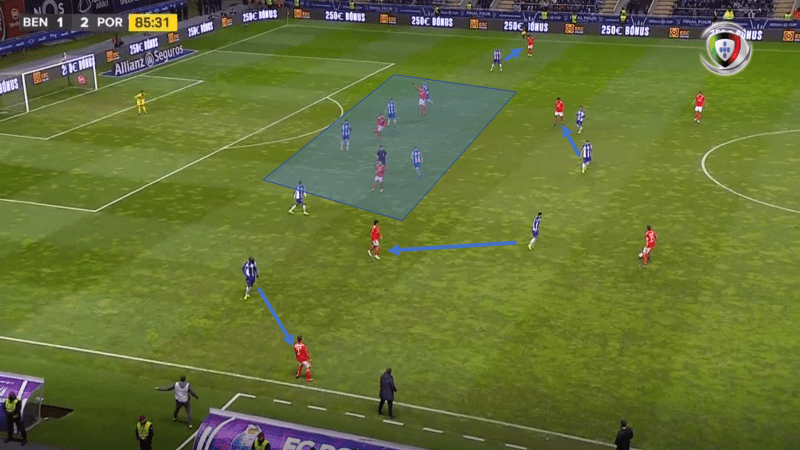
When Porto won back possession, they then counter-attacked. The two players marking out wide would initiate the counter-attack and exploit the wide space that had been created by Benfica’s wide positioning.
In the example of Porto’s third goal, it was Fernando who initiated the counter-attack by sprinting onto the through-ball on the left-wing and ultimately scoring to win the tie 3-1.
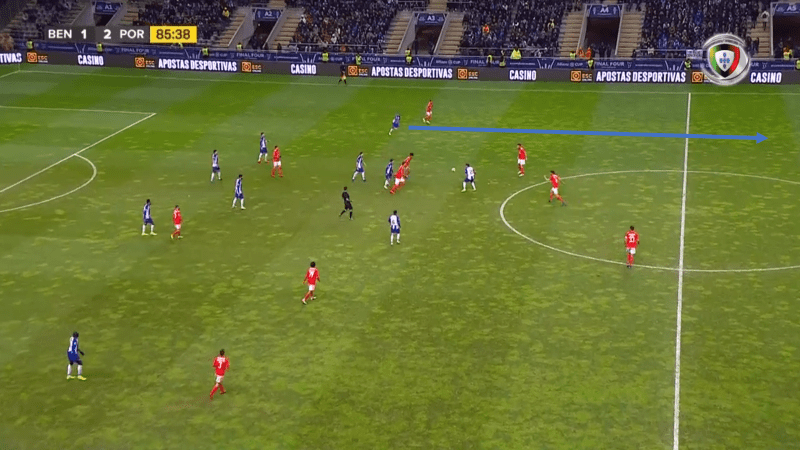
Conclusion
Porto showed their dominance in Portugal this season. They will advance to the final this Saturday where they will play for their first chance of silverware in their quest to win the domestic treble.
Coming up they also have a semi-final against Braga in Portugal’s main cup competition, the Taça de Portugal, as well as their five-point gap at the top of Liga NOS. With a Champions League last-16 tie approaching with Roma, this could be some season for Os Dragões.
If you love tactical analysis, then you’ll love the digital magazines from totalfootballanalysis.com – a guaranteed 100+ pages of pure tactical analysis covering topics from the Premier League, Serie A, La Liga, Bundesliga and many, many more. Buy your copy of the January issue for just ₤4.99 here, or even better sign up for a ₤50 annual membership (12 monthly issues plus the annual review) right here.

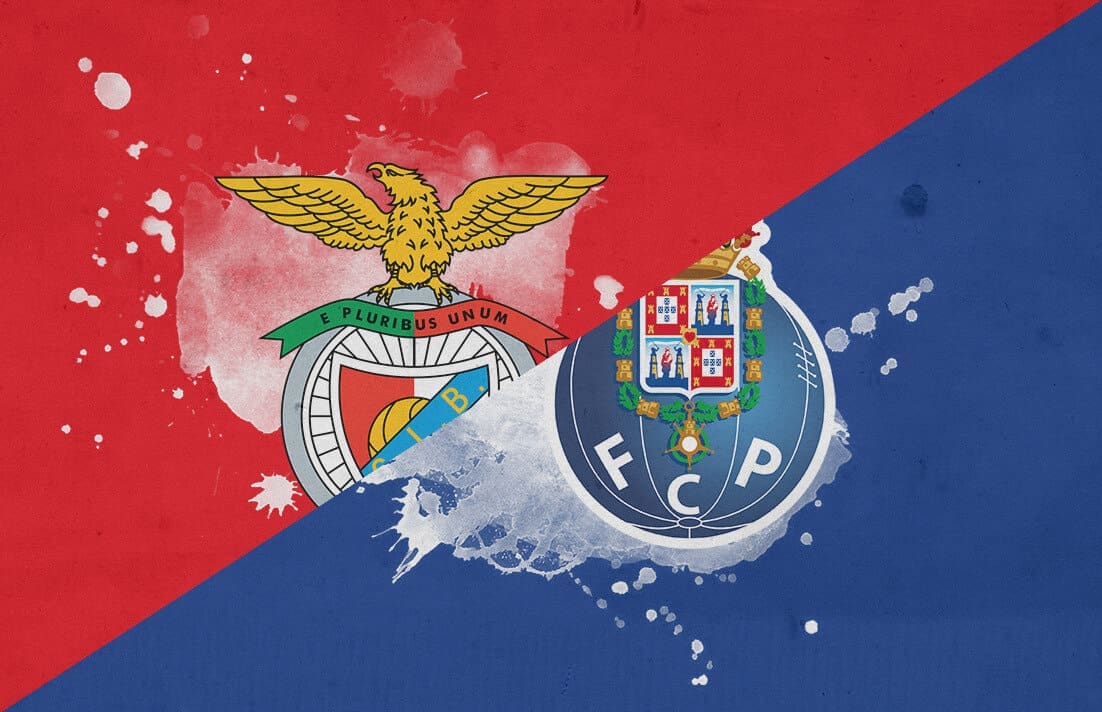



Comments